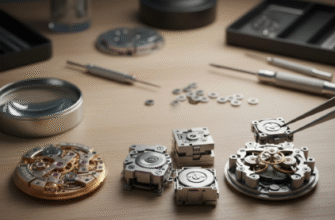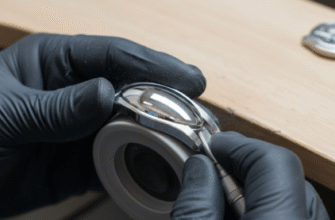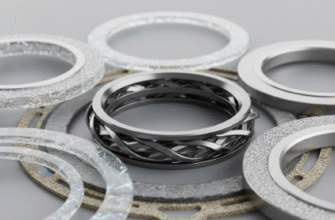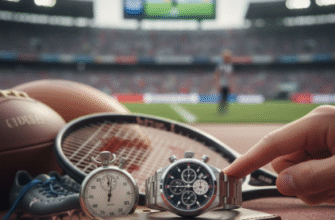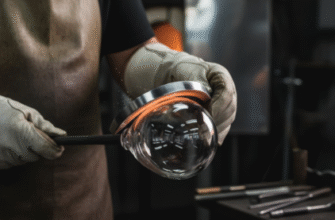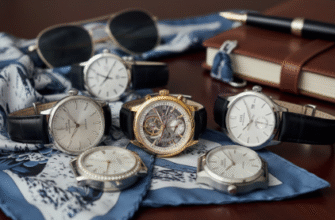The Philosophy of Minimal Intervention
The cardinal rule governing the preservation of vintage watch cases is minimal intervention. Every decision, every action, must be weighed against the potential for irreversible alteration. A watch case from the 1940s, 50s, or 60s, will inevitably exhibit signs of wear: hairline scratches, minor dings, and perhaps a softening of the original sharp edges and facets. These aren’t flaws to be corrected but testaments to authenticity. A ‘shelf queen’ – a vintage watch that appears factory fresh – often raises suspicions of aggressive re-polishing, a process that can significantly thin the case material and destroy the geometric precision of the original design.
For a specialist conservator, the initial assessment is critical. This involves a magnified visual inspection to identify the case material (stainless steel, various gold alloys, platinum, etc.), the type of finish (brushed, polished, sandblasted, or a combination), and the extent of the wear. Photographs are taken from multiple angles to document the ‘before’ condition, creating an immutable reference point. This phase is less about repair and more about reading the case – understanding where the wear is genuine and where damage might indicate a past, non-original intervention.
The most critical aspect of preserving a vintage watch case’s originality lies in maintaining its original geometry. Aggressive re-polishing, even with the intent to remove scratches, rounds off sharp edges and facets, fundamentally changing the look and feel intended by the original manufacturer and significantly diminishing collector value. Verification of original geometry often involves cross-referencing with untouched examples or factory schematics.
Cleaning: The Gentle Art
Before any mechanical work, the case must be meticulously cleaned. This is rarely a simple dunk-and-scrub operation. Dirt, sweat, and oxidized residue accumulate in crevices, around the lugs, and beneath the bezel over decades. The goal is to remove this detritus without disturbing the metal or any surviving factory-applied finishes. Ultrasonic cleaning is sometimes employed, but only with extreme caution and specialized, non-aggressive solutions, especially for cases that may have compromised seals or internal components that could be dislodged by the vibration. More often, the work is done by hand:
- Soft Brushes and Isopropyl Alcohol (IPA): For surface grime and fingerprint oils. IPA is a solvent that evaporates cleanly and generally doesn’t harm metal finishes.
- Wooden or Plastic Picks: Used under high magnification to gently remove compacted dirt from tight corners, such as between the lugs or around the crown tube, where years of grime can accumulate.
- Specialized Putties: Sometimes used to lift residues without abrasive contact, particularly on textured or matte finishes.
The emphasis here is on conservation, not restoration. The aim is to reveal the original state beneath the grime, not to create a ‘new’ surface.
Addressing Wear: The Dilemma of Patina
When it comes to addressing actual physical wear – scratches and dings – the preservationist faces their greatest ethical quandary. A deep scratch might be unsightly, but its removal requires the sacrifice of surrounding, original metal. The consensus among serious collectors and preservation experts is to leave minor and moderate surface wear alone.
However, there are exceptions. Deep gashes or deformations that compromise the water resistance or structural integrity of the case may necessitate intervention. When a repair is unavoidable, the most authentic methods are employed:
Laser Welding for Case Repair
This is a modern technique but one that aligns with the philosophy of minimal intervention. Laser welding allows a skilled technician to add minute amounts of matching metal into a deep gouge or ding. Because the heat is highly localized, there is minimal thermal stress to the surrounding metal, and the repair can be incredibly precise. Once the metal is added, it is meticulously shaped back to the original contour. Crucially, this process avoids the need to grind down surrounding original metal to the depth of the damage, which is the destructive outcome of traditional abrasive polishing.
Extreme caution must be exercised when considering any form of abrasive polishing on vintage watch cases. Even light buffing can easily remove material from sharp edges and factory chamfers, resulting in a ‘softened’ or ‘melted’ appearance that permanently devalues the watch’s originality. If polishing is deemed absolutely necessary (e.g., to match a laser-welded repair), it should be done by hand using extremely fine-grit abrasive materials, focusing only on the immediate area of the repair.
The Challenge of Factory Finishes
Many high-end watch cases utilize a combination of finishes – mirror polish on the sides contrasting with a satin or brushed finish on the top surfaces (lugs). Reproducing these finishes correctly is a hallmark of authentic preservation. The goal is to isolate and treat each surface independently:
- Brushed/Satin Finishes: These are usually achieved with specialized abrasive blocks or wheels that create a uniform directional grain. The conservator must match the original grain direction and coarseness, which often requires specialized tools and a historical reference. Adjacent polished surfaces are masked off to prevent accidental abrasion.
- Mirror Polish: Achieved through multiple stages of finer polishing compounds. The focus remains on not altering the case geometry. This is often the most destructive part of poor restoration, as it’s tempting to spend too much time on the wheel, sacrificing material.
The preservation of case markings, such as serial numbers, reference numbers, and hallmarks (like gold purity stamps), is paramount. These are often faintly engraved on the case back or between the lugs. Any restoration process must absolutely ensure these critical identifying marks remain clear and legible. An aggressive polishing job that removes or softens these identifiers is considered a catastrophic failure in preservation.
Long-Term Preservation and Documentation
The final step in the meticulous process is ensuring the long-term health of the case. This involves the proper reinstallation of the movement and the replacement of all gaskets (crystal, case-back, crown tube) with new, correctly sized materials. While the watch may not be rated for its original water resistance, fresh seals protect the delicate mechanism from everyday moisture and dust infiltration.
Crucially, the entire process is meticulously documented. The ‘before’ photographs, details of the cleaning agents used, the type of repair (e.g., “minimal laser welding to 9 o’clock lug ding”), and the ‘after’ photographs form a conservation report. This report is invaluable, as it provides a transparent history of the case’s preservation journey, reassuring future owners and authenticating the integrity of the work performed. The preservation of a vintage watch case, therefore, transcends mere metalwork; it is a dedicated effort to protect an object’s history, a silent narrative etched in steel or gold, for the enjoyment of generations to come.
A genuinely preserved case is one that tells its story without apology—a subtle blend of factory finish and the honest patina earned from a life well-worn. This respect for the object’s history is the foundation upon which the entire practice of vintage watch preservation is built.

